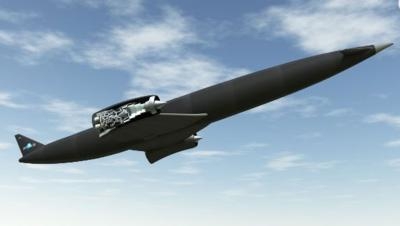Sat, Jul 06, 2013
SABRE Hybrid Engine Project Mentioned In Spending Review
New life was breathed into an advanced hybrid jet engine project under development in the U.K. in the Chancellor of the Exchequer's spending review delivered to the British Parliament last week.

Chancellor George Osborne specifically mentioned the SABRE program in his speech, who pledged to fund such high-technology and, in his words, "high-priority" projects, though he did not give any details.
SABRE stand for Synergistic Air-Breathing Rocket Engine. SEN TV reports that it is under development by a company called Reaction Engines based at Abingdon near Oxford in the U.K. In a news release from 2010, the company called the technology "game changing." According to the release, the SABRE engine is capable of operating as a jet engine and a rocket engine, powering aircraft at up to five times the speed of sound within the atmosphere or directly into Earth orbit at twenty-five times the speed of sound. Its ground-breaking technology – an air pre-cooler - is designed to cool continuously the incoming airstream from over 1,000°C to minus 150°C in less than 1/100th of a second (six times faster than the blink of an eye), effectively doubling the current technical limits of jet engine speeds.
The engine is being developed for a vehicle dubbed Skylon, described as an unpiloted, reusable single stage to orbit (SSTO) space plane "that will provide reliable access to space and be capable of delivering payloads of up to 16 tons into Low Earth Orbit (LEO, approximately 186 miles in altitude) at about 1/50th of the cost of traditional expendable launch vehicles, such as rockets. SKYLON’s SABRE engines use liquid hydrogen combined with oxygen from the air at altitudes up to 16 miles and speeds of up to Mach 5 before switching over to on-board liquid oxygen for the final stage of ascent."
SEN TV says that the company eventually plans to create a version of Skylon that could transport astronauts to the International Space Station. They also envision an airliner, LAPCAT, that could fly from Europe to Australia in just over four hours.
(Skylon image provided by Reaction Engines)
More News
How To Get A Story On Aero-TV News/Feature Programming How do I submit a story idea or lead to Aero-TV? If you would like to submit a story idea or lead, please contact Jim Campbel>[...]
Aero Linx: International Association of Professional Gyroplane Training (IAPGT) We are an Association of people who fly, build or regulate Gyroplanes, who have a dream of a single >[...]
NORDO (No Radio) Aircraft that cannot or do not communicate by radio when radio communication is required are referred to as “NORDO.”>[...]
Beyond Visual Line Of Sight (BVLOS) The operation of a UAS beyond the visual capability of the flight crew members (i.e., remote pilot in command [RPIC], the person manipulating th>[...]
Aero Linx: Malibu M-Class Owners and Pilots Association (MMOPA) The Piper M-Class Owners & Pilots Association (PMOPA) is a not-for-profit organization dedicated to the interest>[...]
 ANN FAQ: Contributing To Aero-TV
ANN FAQ: Contributing To Aero-TV ANN's Daily Aero-Linx (05.29.24)
ANN's Daily Aero-Linx (05.29.24) ANN's Daily Aero-Term (05.29.24): NORDO (No Radio)
ANN's Daily Aero-Term (05.29.24): NORDO (No Radio) ANN's Daily Aero-Term (05.30.24): Beyond Visual Line Of Sight (BVLOS)
ANN's Daily Aero-Term (05.30.24): Beyond Visual Line Of Sight (BVLOS) ANN's Daily Aero-Linx (05.30.24)
ANN's Daily Aero-Linx (05.30.24)



